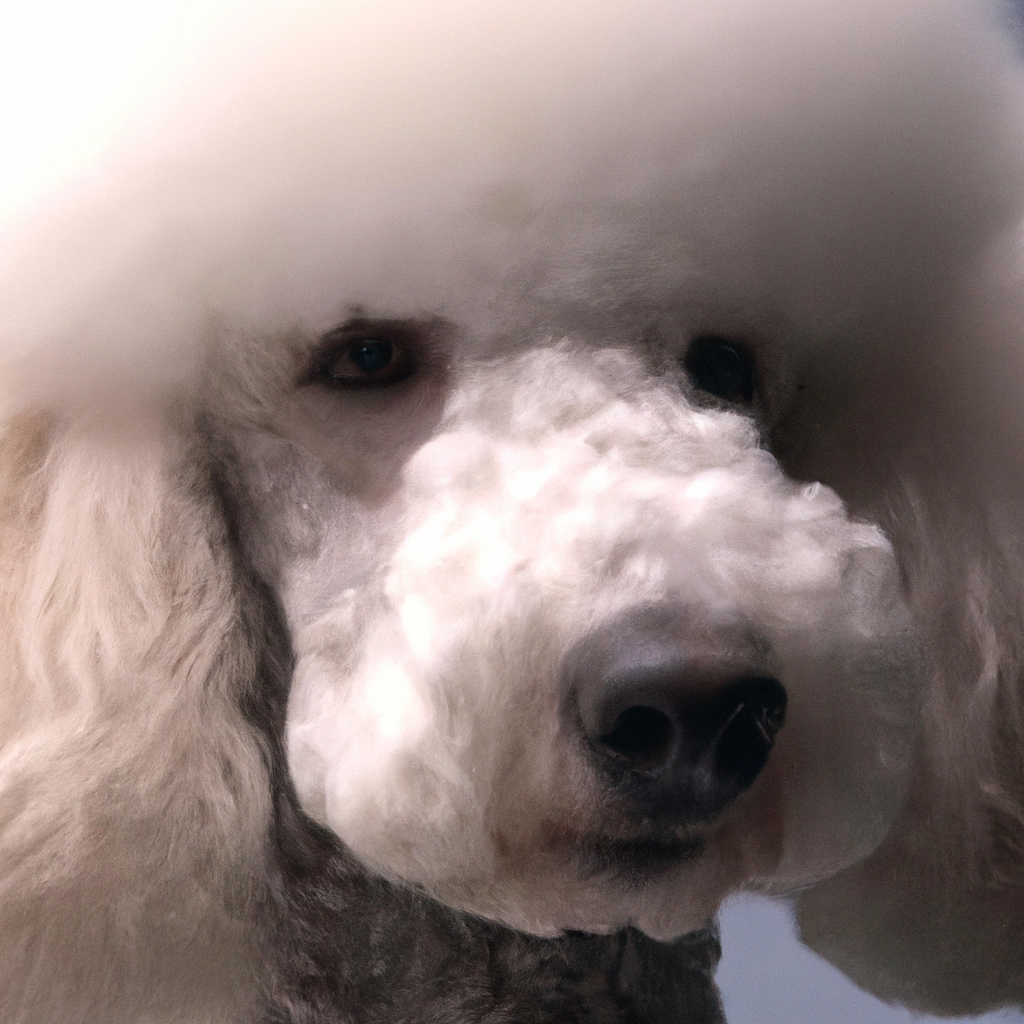Discover the vibrant world of German Shepherd colors.
German Shepherds are one of the most popular dog breeds in the world. They are known for their intelligence, loyalty, and versatility. One of the most striking features of German Shepherds is their coat color. While the most common color is black and tan, there are many other variations that are equally beautiful. In this article, we will explore the common, unusual, and rare colors of German Shepherds.
Black and Tan German Shepherds
German Shepherds are one of the most popular dog breeds in the world. They are known for their intelligence, loyalty, and versatility. One of the most distinctive features of German Shepherds is their coat color. While the most common color is black and tan, there are also many other varieties of German Shepherds with unique and rare coat colors.
Black and tan German Shepherds are the most common variety of this breed. They have a black saddle on their back, black ears, and a tan or cream-colored coat on their chest, legs, and face. This color combination is the result of a dominant gene that is present in most German Shepherds. Black and tan German Shepherds are highly sought after for their striking appearance and their excellent temperament.
In addition to black and tan, there are several other common color varieties of German Shepherds. Sable German Shepherds have a coat that ranges from light tan to dark brown, with black tips on the hairs. This gives them a distinctive “wolf-like” appearance. Bi-color German Shepherds have a black coat with tan or cream-colored markings on their legs, chest, and face. They are similar in appearance to black and tan German Shepherds, but with less tan coloring.
While black and tan, sable, and bi-color German Shepherds are the most common varieties, there are also several unusual and rare color varieties of this breed. Blue German Shepherds have a coat that is a grayish-blue color. This is the result of a recessive gene that is not commonly found in German Shepherds. Blue German Shepherds are highly prized for their unique appearance, but they are also more prone to health problems than other varieties.
Liver German Shepherds have a coat that is a reddish-brown color. This is also the result of a recessive gene that is not commonly found in German Shepherds. Liver German Shepherds are rare and highly sought after, but they are also more prone to health problems than other varieties.
White German Shepherds have a coat that is pure white. This is the result of a recessive gene that is not commonly found in German Shepherds. White German Shepherds are highly prized for their unique appearance, but they are also more prone to health problems than other varieties. They are also controversial, as some breeders believe that they are not true German Shepherds and should not be bred.
In conclusion, German Shepherds are a versatile and popular breed with a wide range of coat colors. While black and tan is the most common variety, there are also many other common, unusual, and rare color varieties of German Shepherds. Each variety has its own unique characteristics and traits, and it is important for potential owners to research and understand the differences before choosing a German Shepherd. Regardless of the color variety, German Shepherds are loyal, intelligent, and loving companions that make excellent pets and working dogs.
Sable German Shepherds
German Shepherds are one of the most popular dog breeds in the world. They are known for their intelligence, loyalty, and versatility. One of the most striking features of German Shepherds is their coat color. While the most common color is black and tan, there are many other varieties, including sable German Shepherds.
Sable German Shepherds are characterized by their unique coat color. Their fur is a mixture of black, brown, and gray, giving them a distinctive look. The color of their fur can range from light tan to dark brown, and the black hairs are usually interspersed throughout the coat. This gives them a beautiful, natural look that is highly sought after by many dog lovers.
Sable German Shepherds are not a separate breed, but rather a variation of the German Shepherd breed. They are recognized by the American Kennel Club (AKC) and are considered to be a standard color for the breed. However, sable German Shepherds are not as common as black and tan or solid black German Shepherds.
One of the reasons why sable German Shepherds are not as common is that their coat color is more difficult to breed. The sable color is a dominant gene, which means that both parents must carry the gene for their offspring to have the sable coat. This makes it more challenging for breeders to produce sable German Shepherds, which is why they are often more expensive than other varieties.
Sable German Shepherds are highly prized for their beauty and unique appearance. They are also known for their intelligence, loyalty, and protective nature. They make excellent family pets and are great with children. They are also used as police dogs, search and rescue dogs, and service dogs.
One of the benefits of owning a sable German Shepherd is that they are less prone to certain health issues than other varieties. For example, solid black German Shepherds are more likely to develop skin problems, while white German Shepherds are more prone to deafness. Sable German Shepherds, on the other hand, are less likely to have these issues.
If you are considering getting a sable German Shepherd, it is important to find a reputable breeder. Look for a breeder who is knowledgeable about the breed and who has a good reputation. Ask to see the parents of the puppies and make sure they are healthy and well-cared for. You should also ask about any health issues that may be common in the breed and make sure the breeder has taken steps to prevent them.
In conclusion, sable German Shepherds are a beautiful and unique variety of the German Shepherd breed. They are highly prized for their intelligence, loyalty, and protective nature. While they are not as common as other varieties, they are recognized by the AKC and are considered to be a standard color for the breed. If you are considering getting a sable German Shepherd, make sure to find a reputable breeder and ask about any health issues that may be common in the breed. With proper care and training, a sable German Shepherd can make a wonderful addition to any family.
Blue German Shepherds
German Shepherds are one of the most popular dog breeds in the world. They are known for their intelligence, loyalty, and versatility. German Shepherds come in a variety of colors, including black, white, and sable. However, one of the most striking colors is blue.
Blue German Shepherds are a rare variety of the breed. They have a unique blue-gray coat that sets them apart from other German Shepherds. The blue color is caused by a recessive gene that affects the pigmentation of the dog’s coat. This gene is not common in German Shepherds, which is why blue German Shepherds are so rare.
Blue German Shepherds are not recognized by the American Kennel Club (AKC) as a separate breed. However, they are recognized by some other organizations, such as the United Kennel Club (UKC). The UKC considers blue German Shepherds to be a separate variety of the breed.
Blue German Shepherds have the same temperament and characteristics as other German Shepherds. They are intelligent, loyal, and protective. They make excellent family pets and are often used as working dogs, such as police dogs or search and rescue dogs.
One thing to keep in mind when considering a blue German Shepherd is that they may be more prone to certain health issues. The recessive gene that causes the blue color can also cause skin problems and other health issues. It is important to choose a reputable breeder who tests their dogs for these health issues.
If you are interested in getting a blue German Shepherd, it is important to do your research and find a reputable breeder. Look for a breeder who specializes in blue German Shepherds and who has a good reputation. Ask to see health certificates for the parents of the puppies to ensure that they have been tested for any health issues.
In conclusion, blue German Shepherds are a rare and unique variety of the breed. They have a striking blue-gray coat that sets them apart from other German Shepherds. While they are not recognized by the AKC as a separate breed, they are recognized by some other organizations. Blue German Shepherds have the same temperament and characteristics as other German Shepherds, but may be more prone to certain health issues. If you are interested in getting a blue German Shepherd, it is important to do your research and find a reputable breeder who tests their dogs for any health issues.
Liver German Shepherds
German Shepherds are one of the most popular dog breeds in the world. They are known for their intelligence, loyalty, and versatility. One of the most striking features of German Shepherds is their coat color. While the most common color is black and tan, there are many other colors that are less common, including liver.
Liver German Shepherds are a rare variety of the breed. Their coat color is a rich, reddish-brown, which is caused by a recessive gene. This gene is not as common as the gene for black and tan, which is why liver German Shepherds are not as common.
Liver German Shepherds have a unique look that sets them apart from other varieties of the breed. Their coat is a deep, rich color that is often described as mahogany or chestnut. Their eyes are usually a lighter color than other German Shepherds, ranging from amber to light brown.
While liver German Shepherds are rare, they are still recognized by the American Kennel Club (AKC). They are considered a standard color variety, which means that they are eligible to compete in AKC events. However, they are not as common in the show ring as other colors.
Liver German Shepherds are just as intelligent and loyal as other varieties of the breed. They make excellent family pets and are great with children. They are also highly trainable and excel in obedience, agility, and other dog sports.
If you are considering getting a liver German Shepherd, it is important to find a reputable breeder. Because this variety is rare, it can be difficult to find a breeder who specializes in liver German Shepherds. However, it is important to do your research and find a breeder who is knowledgeable about the breed and who breeds for health and temperament.
Liver German Shepherds are prone to some health issues, just like any other variety of the breed. These can include hip dysplasia, elbow dysplasia, and bloat. It is important to work with a breeder who screens their dogs for these conditions and who is transparent about their breeding practices.
In addition to liver German Shepherds, there are many other uncommon and rare colors of the breed. These can include blue, white, and sable. While these colors are not as common as black and tan, they are still recognized by the AKC and can make great pets.
In conclusion, liver German Shepherds are a rare and unique variety of the breed. Their rich, reddish-brown coat sets them apart from other varieties of the breed and gives them a distinctive look. While they are not as common as other colors, they are still recognized by the AKC and make great family pets. If you are considering getting a liver German Shepherd, it is important to find a reputable breeder who specializes in this variety and who breeds for health and temperament.
White German Shepherds
German Shepherds are one of the most popular dog breeds in the world. They are known for their intelligence, loyalty, and versatility. German Shepherds come in a variety of colors, including black, sable, and white. In this article, we will explore the different colors of German Shepherds, with a focus on the white variety.
White German Shepherds are a relatively new color variation of the breed. They were first recognized by the American Kennel Club in 1968. White German Shepherds are not albinos, but rather a result of a recessive gene. They have a white coat, black nose, and dark eyes. Their coat is thick and dense, with a soft undercoat.
White German Shepherds are often mistaken for albino dogs because of their white coat. However, albino dogs have a complete lack of pigment, which results in a pink nose and blue eyes. White German Shepherds, on the other hand, have a black nose and dark eyes.
White German Shepherds are just as intelligent and loyal as their colored counterparts. They are also known for their calm and gentle temperament, making them great family pets. They are highly trainable and excel in obedience, agility, and search and rescue.
White German Shepherds are not as common as other color variations of the breed. This is because breeders often cull white puppies from litters because they are not considered desirable. However, there are breeders who specialize in white German Shepherds and work to promote the breed.
White German Shepherds are prone to certain health issues, just like any other dog breed. They are at risk for hip dysplasia, which is a genetic condition that affects the hip joint. They are also prone to skin allergies and ear infections. It is important to choose a reputable breeder who screens their dogs for these health issues.
In conclusion, white German Shepherds are a beautiful and unique color variation of the breed. They are just as intelligent and loyal as their colored counterparts, and make great family pets. While they are not as common as other color variations, there are breeders who specialize in white German Shepherds. It is important to choose a reputable breeder who screens their dogs for health issues. If you are considering adding a white German Shepherd to your family, be prepared to provide them with plenty of exercise, training, and love.
Q&A
1. What are the common colors of German Shepherds?
– The common colors of German Shepherds are black and tan, sable, and black.
2. What are some unusual colors of German Shepherds?
– Some unusual colors of German Shepherds are blue, liver, and white.
3. Are white German Shepherds rare?
– Yes, white German Shepherds are considered rare.
4. What is the difference between a sable and a black and tan German Shepherd?
– A sable German Shepherd has a coat that ranges from light tan to dark brown with black tips, while a black and tan German Shepherd has a black coat with tan markings on the legs, chest, and face.
5. Can German Shepherds have multiple colors in their coat?
– Yes, German Shepherds can have multiple colors in their coat, such as black and tan with white markings or sable with black markings.Conclusion: German Shepherds come in a variety of colors, including common, unusual, and rare varieties. While the traditional black and tan coloration is the most common, other colors such as sable, white, and blue also exist. Some of the rarer colors, such as liver and blue sable, are highly sought after by breed enthusiasts. Regardless of their color, German Shepherds are beloved for their intelligence, loyalty, and versatility as working dogs.





